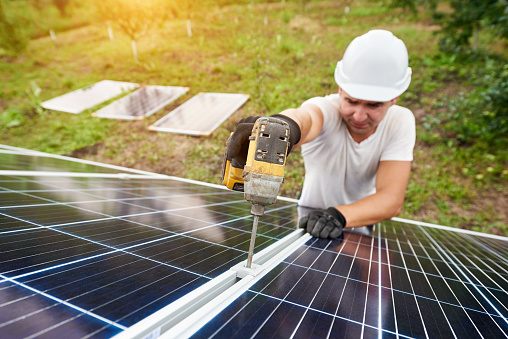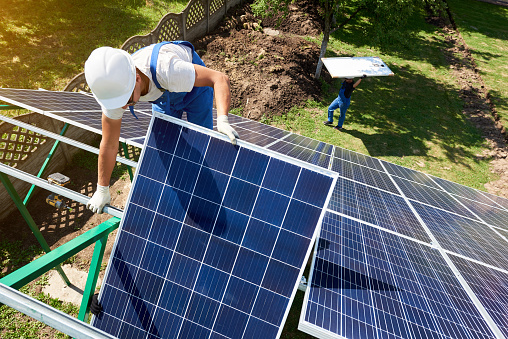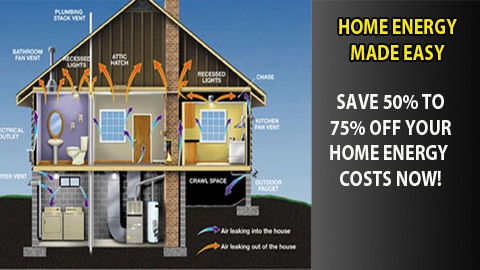
Solar Projects DIY are just what you need. With a little bit of effort and some basic tools, you can create your own solar panels or other devices that run on renewable energy.
DIY solar projects have become increasingly popular in recent years as people look for ways to reduce their carbon footprint and save money on electricity bills. Whether you want to power your home with solar energy, charge your phone on-the-go with a portable solar charger, or simply learn how solar technology works, there is a DIY project out there for everyone.
So why not join the growing community of DIYers who are taking control of their energy usage and making the world a greener place?
Benefits Of DIY Solar Projects
Are you considering a DIY solar project for your home? There are many benefits to taking on this type of project, from cost savings to the satisfaction of completing it yourself.
One major advantage of building your own solar panels or systems is the potential for significant financial savings. By doing the work yourself, you can avoid paying costly installation fees and labor costs. Additionally, you have more control over the materials used, allowing you to choose components that fit within your budget without sacrificing quality or performance.
And once your system is up and running, you’ll see a reduction in your energy bills each month- which means more money in your pocket.
When it comes to tackling a DIY solar project, there’s also a sense of pride and accomplishment that comes with doing it yourself. Not only will you learn new skills along the way, but you’ll be able to take ownership of something that provides tangible benefits for both you and the environment. Plus, seeing firsthand how renewable energy works and being part of the movement towards sustainable living can be incredibly empowering.
So if you’re ready to take on this exciting challenge, let’s get started by discussing what tools and materials you’ll need!
Tools And Materials Needed For DIY Solar Projects

As we discussed earlier, DIY solar projects come with several benefits. Not only do they help you save money on your electricity bills, but they also reduce your carbon footprint and give you a sense of satisfaction that comes from building something yourself.
Now that you’re convinced to start your own solar project at home, let’s talk about the tools and materials needed for it.
To ensure a successful DIY solar project, here are three essential items you’ll need:
- Solar panels: The heart of any solar power system is the panel which collects energy from the sun.
- Inverter: This device converts DC (direct current) produced by the panels into AC (alternating current) required for household use.
- Battery bank: It stores excess energy generated by the panels during daylight hours so that it can be used later when sunlight isn’t available.
Now that you know what basic components are necessary for your solar project let’s dive deeper into different types of DIY solar projects to consider.
Types Of DIY Solar Projects To Consider
When it comes to DIY solar projects, there are a variety of options to consider depending on your skill level and desired outcome.
One popular project is building a solar panel system for your home. This can be achieved by purchasing individual panels and wiring them together into an array that can then be connected to your household electrical system.
Another option is constructing a portable solar generator using batteries, charge controllers, and inverters.
If you’re looking for something simpler but still environmentally friendly, consider building a solar water heater or dryer. These projects require less technical know-how and use the sun’s energy to heat water or dry clothes instead of relying on traditional methods that consume electricity or gas.
Whatever your preference may be, there are plenty of DIY solar projects out there waiting for you to explore!
As exciting as it may be to embark on a DIY solar project, it’s important to have some tips in mind before getting started.
For one, make sure you thoroughly research the project ahead of time so you understand what materials and tools will be needed.
Additionally, always prioritize safety by wearing appropriate gear such as gloves and protective eyewear when handling equipment.
Lastly, don’t hesitate to seek guidance from online forums or professional installers if you encounter any issues along the way – remember that learning through trial and error is part of the fun!
Tips For Successfully Completing Your DIY Solar Project

Now that you have a good understanding of the different types of DIY solar projects available, it’s time to dive into some tips for successfully completing your project. Think of these tips as your personal toolbox, helping you make informed decisions and avoid common mistakes.
The first tip is all about planning. Before starting your project, take the time to research and plan out each step carefully. This includes choosing the right materials, determining how much energy you need to generate, and making sure you have all the necessary tools on hand.
By taking this approach, you’ll be able to save time in the long run and ensure that your project runs smoothly from start to finish. Remember: proper planning prevents poor performance!
Conclusion
Overall, DIY solar projects can be a great way to save money on energy bills and reduce your carbon footprint. With the right tools and materials, anyone can successfully complete their own solar project at home.
But don’t just take my word for it – the benefits of DIY solar projects speak for themselves.
Not only will you be able to enjoy the satisfaction of creating something with your own hands, but you’ll also have the peace of mind knowing that you’re doing your part to help protect our planet.
So why not give it a try? After all, what could be more rewarding than harnessing the power of the sun to create electricity for your home?
In conclusion, if you’re looking for an exciting new project to tackle this year, consider embarking on a DIY solar project.
Whether you choose to build a simple solar panel or go all out with a full-scale system installation, there’s no denying that these projects are both fun and practical.
And who knows – maybe one day soon we’ll live in a world where every home is powered by clean, renewable energy sources like the sun!

